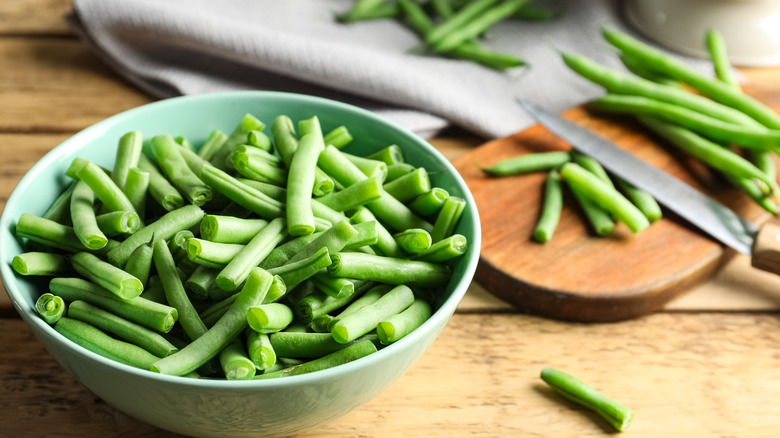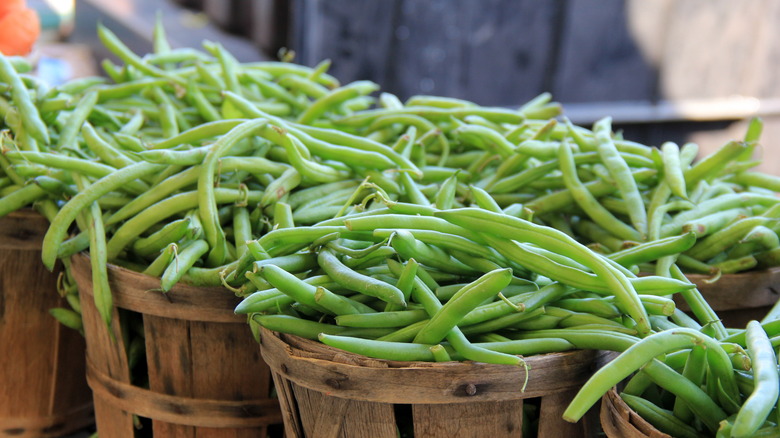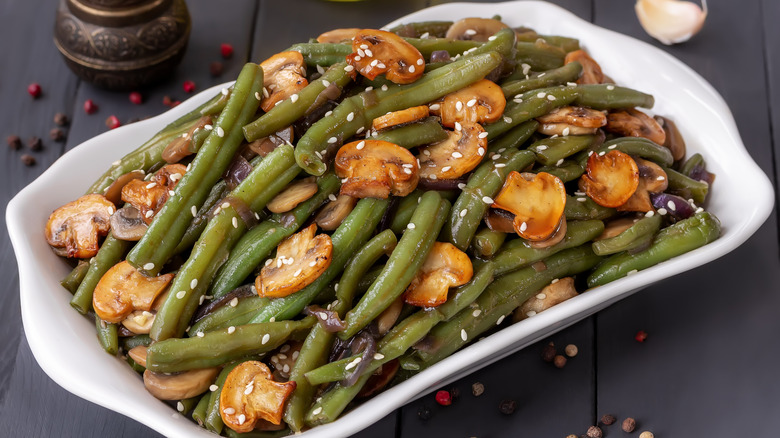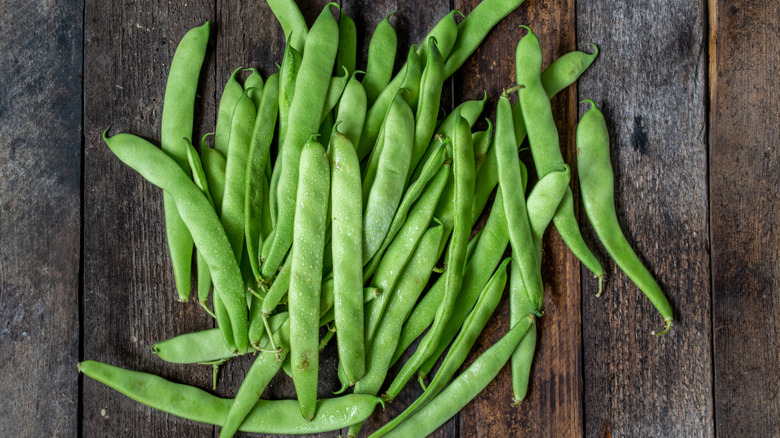Most Of The World's String Beans Come From This Country
Not to be confused with pinto beans or black beans, string beans are vibrantly green, taste crunchy and fresh, and break with a satisfying SNAP! Their subtle flavor makes them easy to incorporate into a variety of dishes or you can sneak them into a dish without the kiddos noticing. Green beans can be simply tossed in a vinaigrette for a quick summer salad, but they are also more than welcome during the winter when they are baked into heartier dishes like the Thanksgiving classic green bean casserole.
String beans are available commercially canned, frozen, and pickled, and most of the time fresh too (via Hmong Farmers). This is essential because it seems that everyone in the world has a string bean dish. In India people cook aloo beans, in Ethiopia people serve up fossolia, and in Japan, they serve up green bean gomaae. This versatile vegetable is beloved around the world, but they hold a special place in the hearts of Americans, especially during the holidays.
The string bean in Wisconsin
If you ever take a road trip around the United States, keep an eye out for fields of string beans. According to the United Nations Food and Agriculture Organization, the United States is the reigning champion when it comes to string bean production. In 2020, the U.S.A. reportedly harvested nearly 830,000 tons of string beans while the runner-up, Mexico, only collected 133,000 tons. But unlike most of the state's produce, the string bean isn't sourced from the Golden State of sunny California, instead, Spectrum News 1 claims that nearly 40% of all green beans are produced in the midwestern state of Wisconsin. While the state is most popularly known for its dairy production, it appears that its string bean production should be equally as lauded.
Beef2Live says that in 2021, Wisconsin continued to reign supreme in string bean production, growing nearly 670 million pounds while New York came in second place, followed by Michigan, Oregon, and Florida. The annual Wisconsin bean harvest takes place between the months of July, August, and September, which is just in time to roll out all those festive fall casseroles (via Seasonal Food Guide).
History of the string bean
Though North America now conquers string bean production, the origin of this green veggie is quite a bit further south. The Wisconsin Department of Public Instruction believes that the string bean, along with the navy, kidney, and black bean, is native to the South American country of Peru. Green beans were an important part of the Native American diet and the indigenous tribes were responsible for spreading string beans throughout the Americas as they migrated from place to place. Other kinds of beans are thought to have originated on other continents, but the string bean, actually the result of an immature kidney bean, is part of the original 3 Sisters of Life (corn, beans, and squash), which Native Americans relied on for an enriched agricultural system (via Daily Harvest Express).
After colonization, Spanish explorers introduced green beans to Europe in the 16th century, although they couldn't quite live up to the English's number one veggie: peas, per Colonial Williamsburg. Now, string beans are considered a staple vegetable in the American diet and are used fresh and frozen to create dishes such as green bean casserole, bean and potato salad, and boiled lemon garlic green beans.
What's so great about string beans?
Everyone knows that a healthy diet isn't considered complete without a few fruits and vegetables. The good news is that string beans are incredibly good for your body and delicious no matter which way you prepare them. Whether you eat them sauteed, boiled, grilled, pickled, or fresh, Healthline says that these greens contain no cholesterol, are a great source of fiber, and contain protein. Green beans are also a fantastic source of vitamins A, C, and K, and chlorophyll, aiding in fertility and overall bone health (via Medical News Today).
What's even better than these stringy little guys being great for you? They are also wicked cheap. The Pricer reports that on average, a pound of green beans costs $3.15 and they are even cheaper when they are in season and fresh. When you are buying your string beans fresh, Healthy Family Project suggests looking for beans that appear long, strong, and flexible, but not limp. You should feel a snap when you break them in half. Once you pick out your perfect green beans, keep them fresh by keeping them cold in an airtight container, and even go as far as to freeze them if you aren't going to eat them up within five days.



